Image Archive




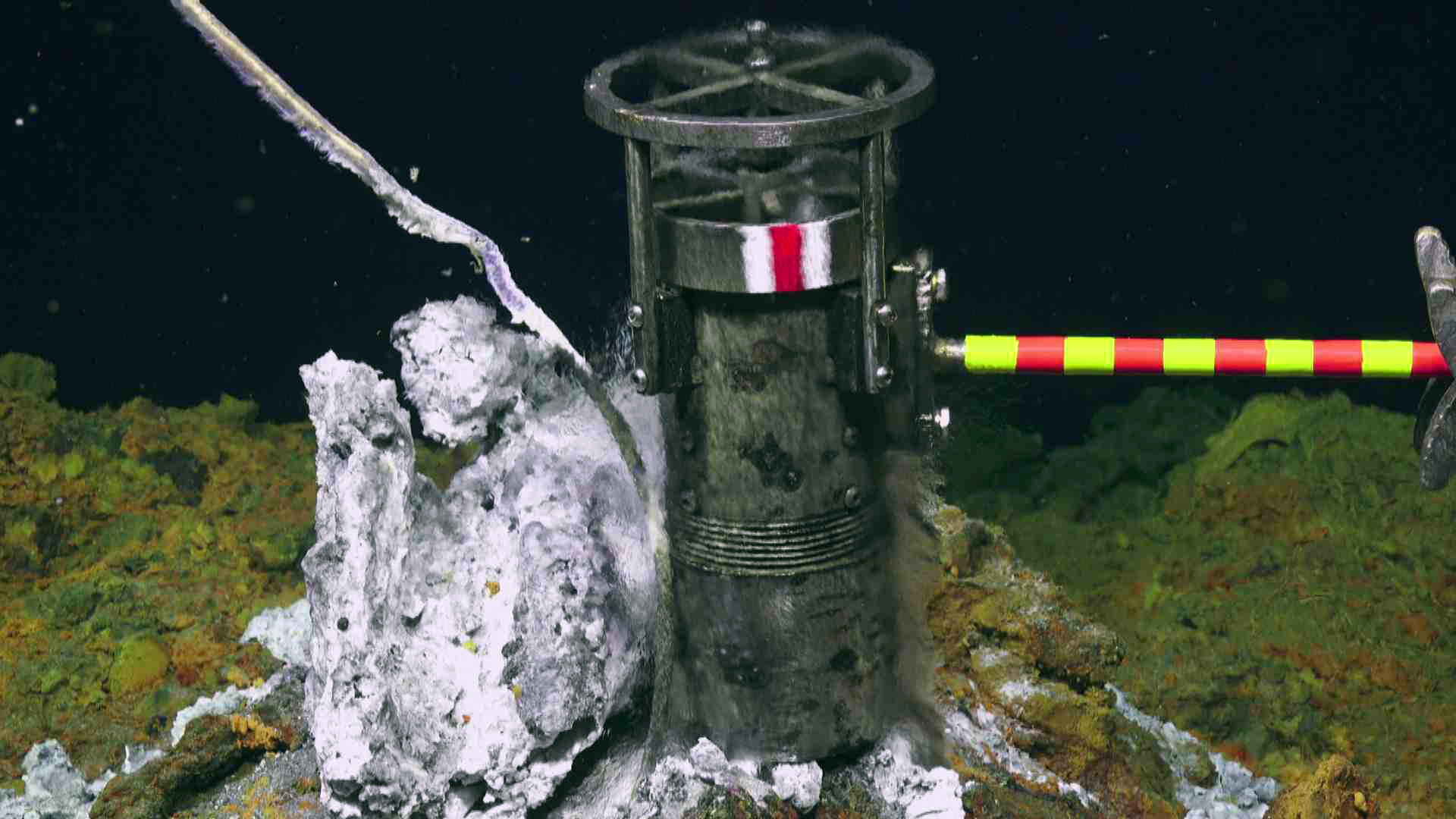





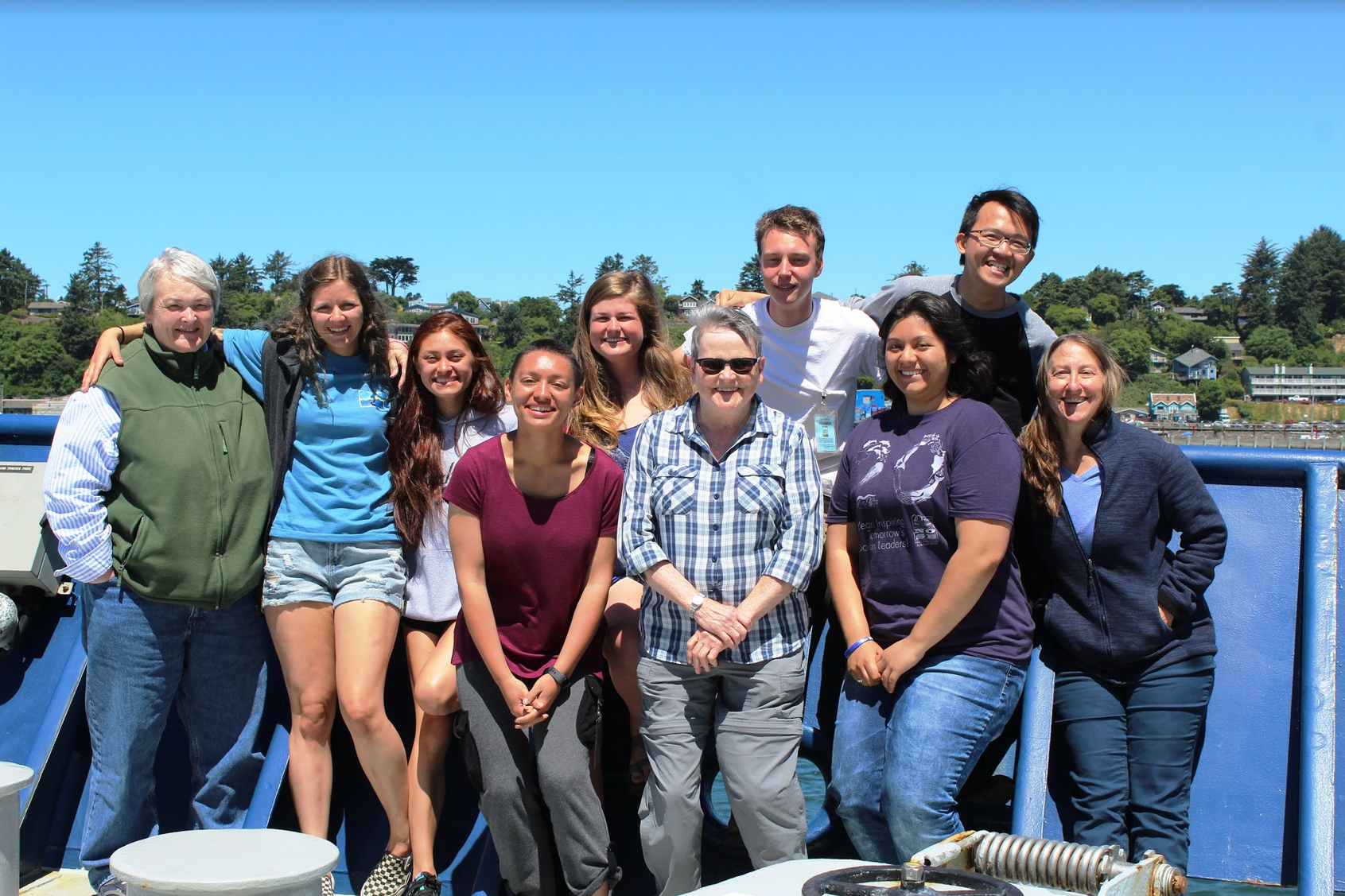


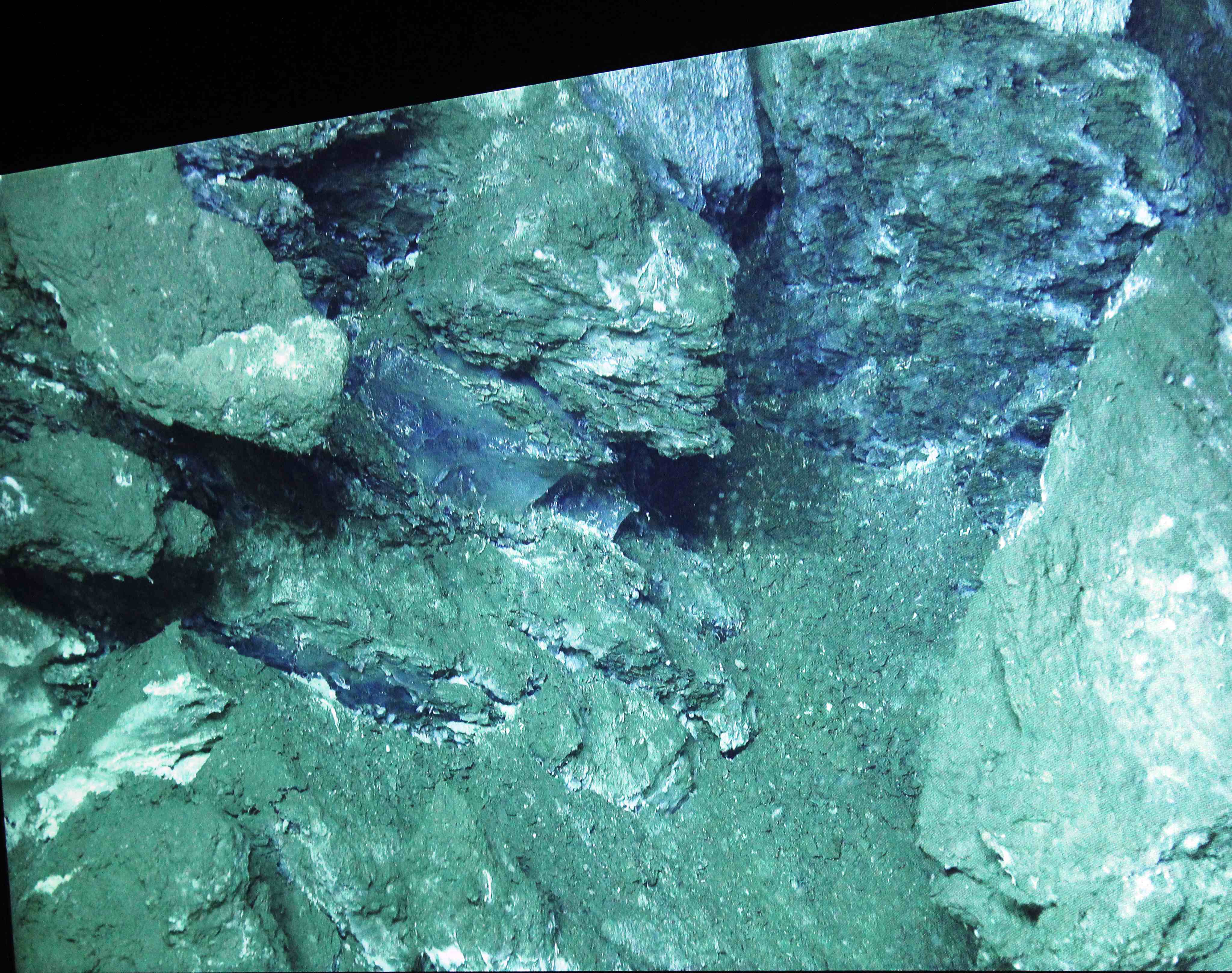
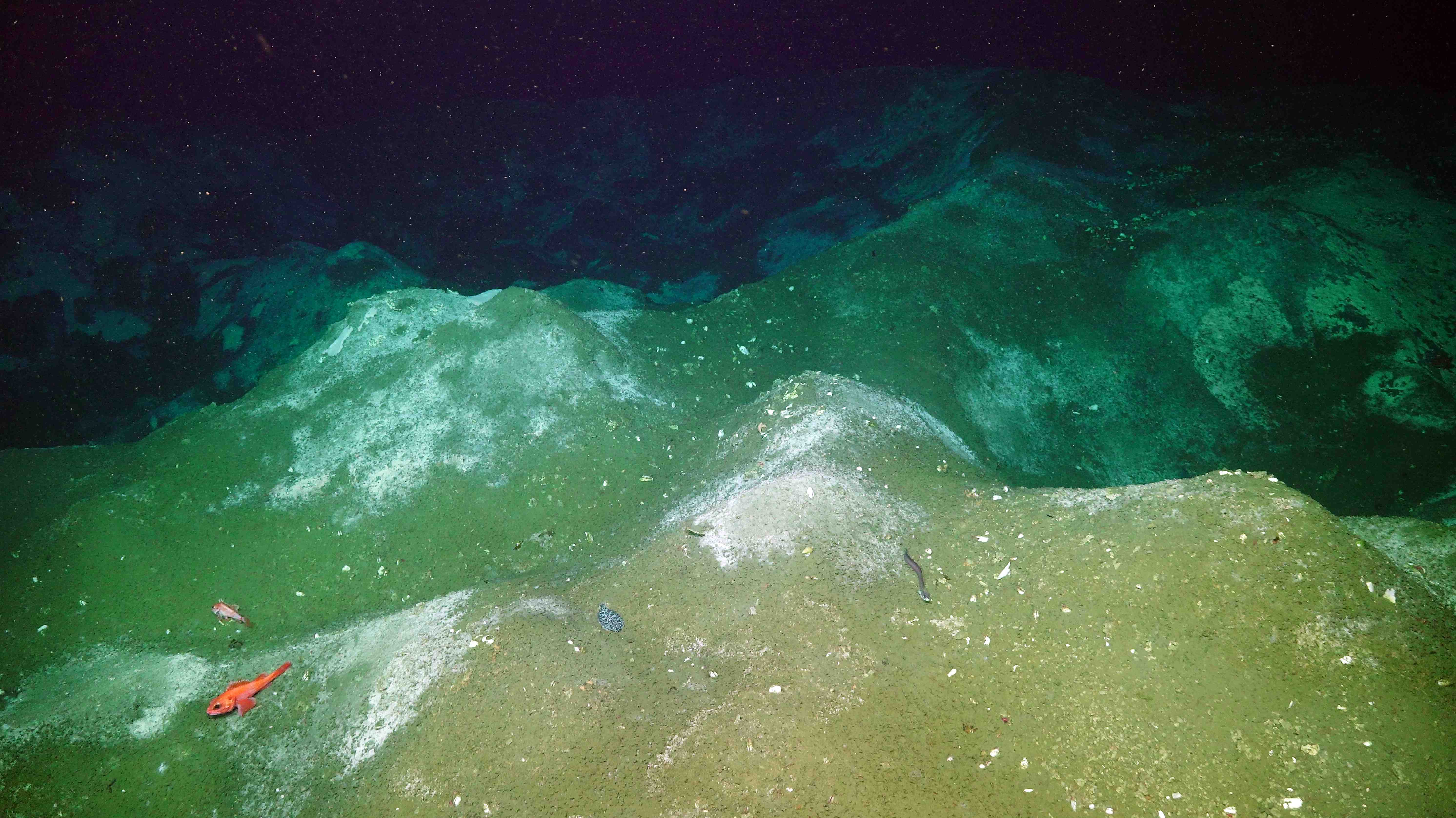
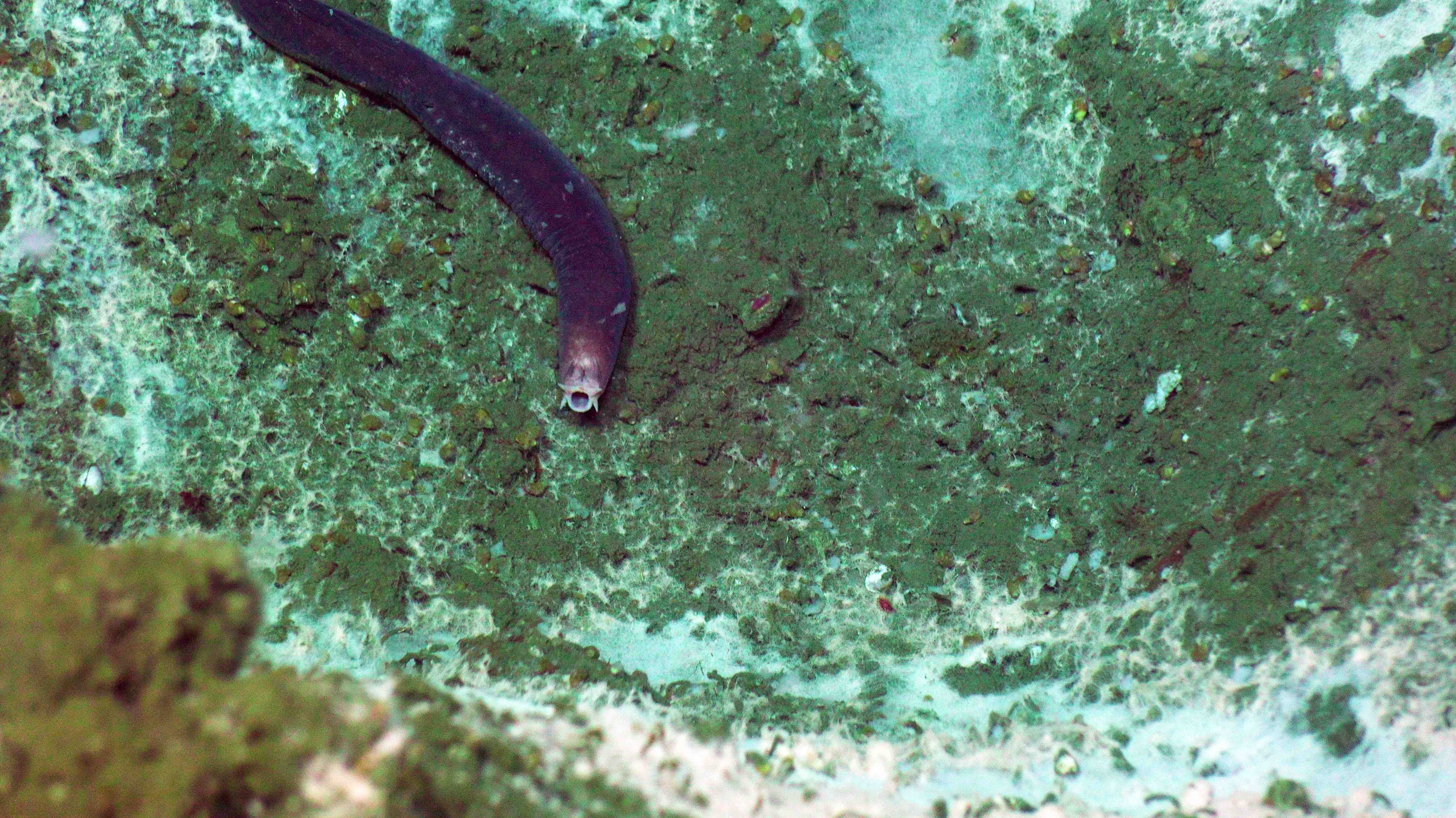

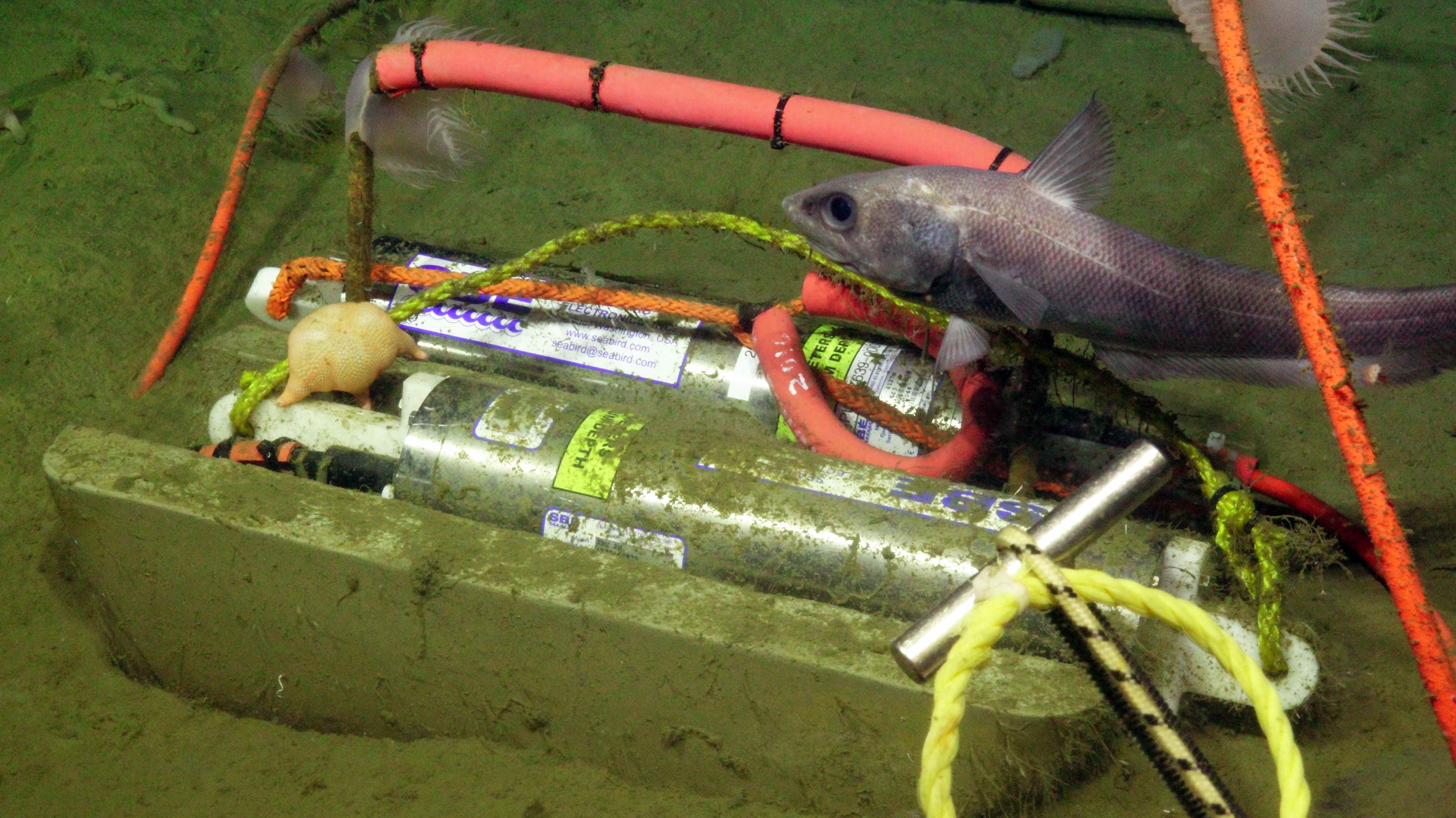
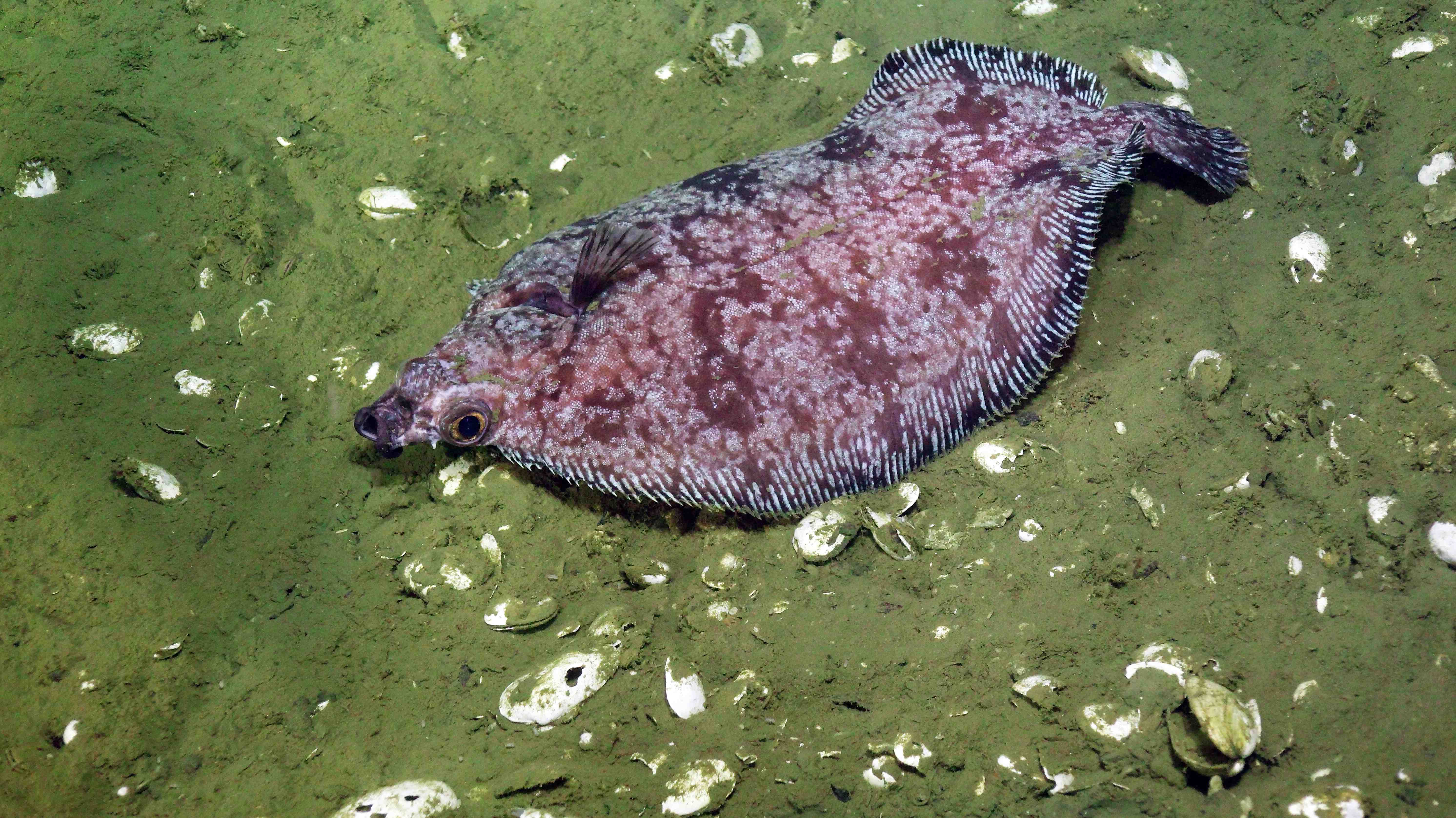








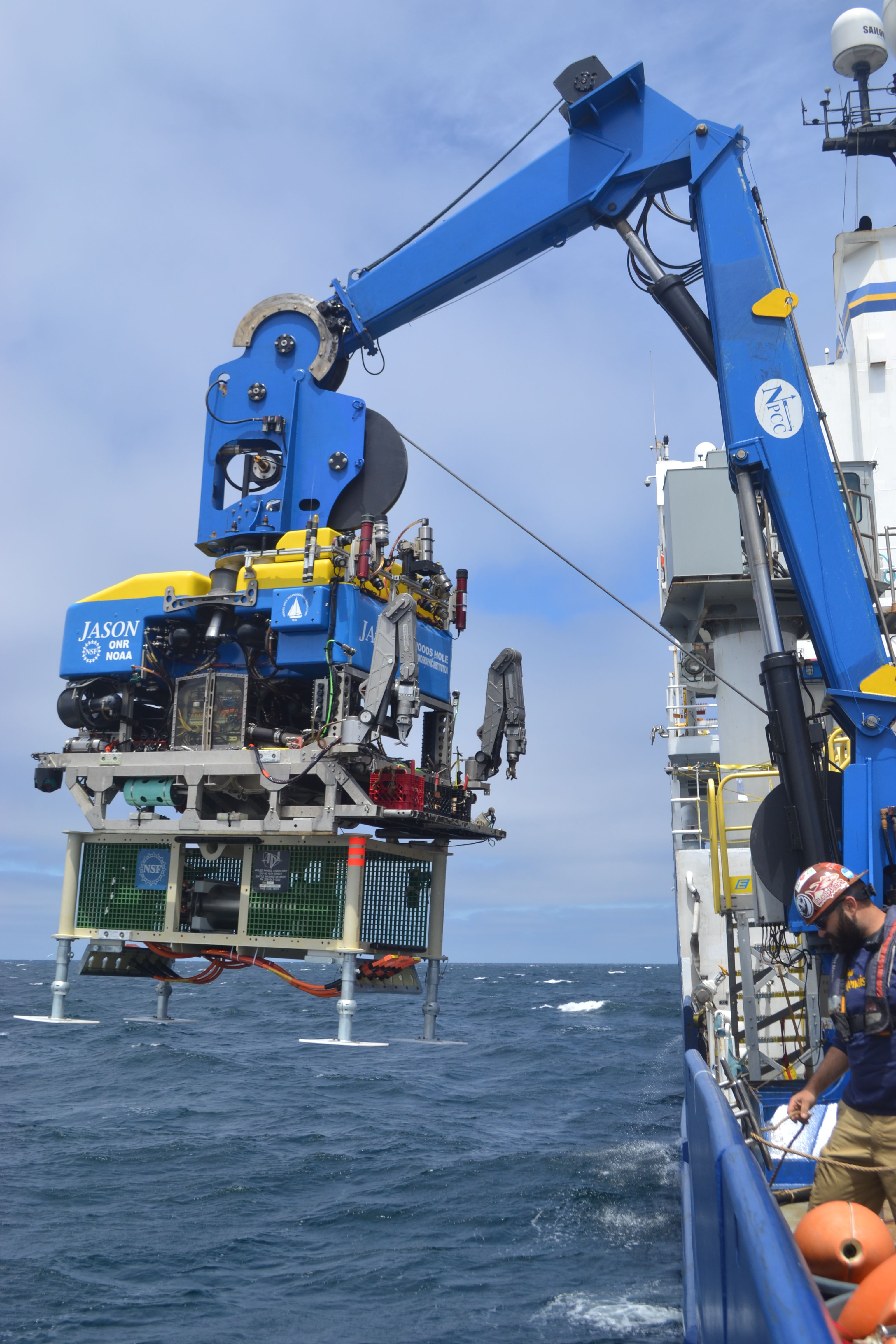

UW Oceanographer Mitch Elend (L) and Co-Chief Scientist Orest Kawka remove samples of hot spring fluids collected 2017-2018 in the remote acces fluid sampler that was capturing fluids from the Tiny Towers diffuse flow site in the International District Hydrothermal Field at the summit of Axial Seamount. Credit: K. Gonzalez, University of Washington, V18.

A 'frozen' lava lake is captured by the cameras on the ROV Jason at the summit of Axial Seamount. Credit: UW/NSF-OOI/WHOI, V18.

Organisms colonize the outer walls of the 16 m-tall hydrothermal edifice called El Guapo. The community structure changes with height above seafloor. Here, limpets, red scale worms and blue protists (ciliates) colonize the outer sulfide walls of the structure. Credit: UW/NSF-OOI/WHOI, V18.

Near the summit of the ~16 m-tall El Guapo chimney, sulfide worms, and tubeworms colonize the younger part of the new sulfide growth. Credit: UW/NSF-OOI/WHOI, V18.

A flow meter for hydrothermal vents is deployed at the small Diva chimney, held in the arm of Jason. Here, fluids are issuing the anhydrite-rich structure at ~ 290°C. The flow meter was designed by Leonid Germanovich, Clemson University. Credit: UW/NSF-OOI/WHOI, V18.

Every year when we are diving in the International District Hydrothermal Field, very large fish, ~ 4 feet! in length come to investigate what we are doing. They swim slowly in the 2.4°C waters. Credit: UW/NSF-OOI/WHOI, V18.

Bing Yu Lee, University of Washington ESS undergratuate student, learns to take fluid samples collected with the CTD Niskin bottles. Credit: M. Elend, University of Washington, V18.

The orifice at the base of the hydrothermal chimney called Mushroom is marked by a strong jet of high temperature hydrothermal fluid. Sulfide worms, scale worms and limpets are bathed in a mixture of the high temperature fluid and seawater. Credit: UW/NSF-OOI/WHOI, V18.

Riah Buchanan, DXARTS Ph.D student at the University of Washington, learns how to process water samples onboard the R/V Revelle from taken >600 ft beneath the oceans'surface. Credit: M. Elend, University of Washington, V18.

The UW-APL-built high definition camera lights up the 12-13 ft tall hot spring deposit called Mushroom, nearly 5000 ft beneath the oceans surface at the summit of Axial Seamount. Credit: UW/NSF-OOI/WHOI,V18.

During Leg 1 (RR1809) of the NSF-funded Cabled Array cruise, there were 10 student participants from the University of Washington. From Left to Right: Deb Kelley (Chief Scientist and Instructor), Rachel Scott, Brittney Slucher, Eve Hudson, Katie Keil, Julie Nelson (Professor at Grays Harbor College and Scientist on the OOI cruise), Leroy Miller, Kaite Gonzalez, Bing-Yu Lee, and Terrie Manning. Not shown is Theresa Whorley and Brendan Philip. Credit: T. Whorley.

Terrie Manning, a member of the VISIONS18 program, takes water samples collected from 2900 m at the Slope Base site. Credit: M. Elend, University of Washington, V18.

UW Oceanography undergraduate student takes water samples collected >9500 ft beneath the oceans surface on VISIONS18. Credit: M. Elend, University of Washington, V18.

A photo from the Jason van screen showing exposed methane hydrate at Einsteins's Grotto - the first time we have observed it there.

Once again the Smokey Caverns (or Taverns as it is also known) has changed remarkably since we visited it with Jason last year. The area is significantly more rugged, marked by large hummocks. An eelpout, sole, clams and orange rock fish dot the landscape. Credit: UW/NSF-OOI/WHOI, V18.

A hagfish with mouth wide open slithers around the Southern Hydrate Ridge methane seep site. Credit: UW/NSF-OOI/WHOI, V18.

An old Ocean Drilling Program hole serves as a nursery for hagfish and crabs at the summit of Southern Hydrate Ridge. Credit: UW/NSF-OOI/WHOI, V18.

A rattail fish (Grenadier) investigates two pressure sensors at 9500 ft water depth at the sedimented Slope Base site. The one in the background has been equilibrating since 2017 on the seafloor. Venus fly-trap like anenomies have colonized the cables that allow data to flow to shore in real-time, and a feeding sea star is on the dusty, 2014 sensor. Credit: UW/NSF-OOI/WHOI, V18.

A deep sea sole, surrounded by clam shells at Southern Hydrate Ridge (~ 800 m water depth). Credit. UW/NSF-OOI/WHOI, V18.

An octopus at 9500 ft beneath the oceans' surface finds a home by the leg of one of the Cabled Array junction boxes at the Slope Base site. Credit: UW/NSF-OOI/WHOI, V18.

A deep sea fish hangs out at Slope Base site at 2900 m water depth (~9500 ft). Credit: UW/NSF-OOI/WHOI, V18.

A hagfish hangs out at the Oregon Offshore site. Credit: UW/NSF-OOI/WHOI; V18.

UW Oceanography student, Rachel Scott, enjoys her second day onboard the R/V Revelle during the OOI-NSF Cabled Array VISIONS cruise.

Collage of photos taken from screens in the control van showing microbial mats, hagfish, rockfish, flounders, shells chaff, clam, carbonate cobbles and methane seeps observed at Southern Hydrate Ridge. B-Y. Lee, University of Washington, V18.

Einsteins Grotto, the active methane seep first visited by the UW in 2010, continues to surprise us - this year, multiple bubble streams were issuing from the pit and exposed methane hydrate was documented in the sides of the wall. Credit: UW/NSF-OOI/WHOI, V18.

The remotely operated vehicle Jason, operated by Woods Hole Oceanographic Institution, enters the NE Pacifc off Newport Oregon as part of the University of Washington led, NSF-OOI Cabled Array expedition. Credit: M. Elend, University of Washington, V18.

An instrumented "Platform Interface Assembly" from the Slope Base site is recovered onto the deck of the R/V Revelle during the OOI-NSF Cabled Array expedition lead by the University of Washington. The platform was attached to a 7,000 lb, 12 ft across mooring platform at 200 m beneath the suface. Attached to the cable it host 18 instruments sending live data to shore 24/7. Credit: M. Elend, University of Washington, V18.

Jason launched over the side of the R/V Revelle during the NSF-funded OOI Cabled Array expedition. A low voltage junction box, built by the UW Applied Physics Lab, is latched under the vehicles 'belly' to safely take it to the seafloor. Credit: M. Elend, University of Washington, V18.
- Anemone
- Animal
- Arthropod
- ASHES
- Axial
- Axial Base
- Axial Biology
- Axial Caldera
- Bacteria
- Basalt Lava
- BEP
- Biofouling
- biolgoy
- Biology
- Camds
- Camera
- Camhd
- Central Caldera
- Ciliates
- Cnidaria
- Coastal Biology
- Crab
- Deep Profiler Mooring
- Dive Highlights
- Eastern Caldera
- Echinoderms
- Endurance Array
- Engineering Team
- ENLIGHTEN 10
- Exploratorium
- Fish
- Geology
- HD Camera
- HPIES
- Hydrate Ridge
- Hydrates
- Hydrophone
- Hydrothermal Vents
- Illustration
- Inshore 80 Meters
- Instrument
- International District
- J-BOX
- Jason
- Jellyfish
- Junction Box
- K12
- Lava
- Mollusk
- Moorings
- Nodes
- Nudibranch
- Octopus
- OOI
- Oregon Offshore
- Oregon Offshore 600 m
- Oregon Shelf
- Oregon Slope Base
- People
- PN1B
- PN1D
- Polychaetes
- PPSDN
- Primary Node
- RASFL
- ROCLS
- ROPOS
- ROPOS Dives
- ROV Team
- RV Revelle
- RV Sikuliaq
- RV Thompson
- Salp
- Sample
- SC13
- Science Team
- Sea Cucumber
- Sea Star
- Sea Urchin
- Seafloor
- Seismometer
- Sensors
- Shallow Profiler Mooring
- Shark
- Shipboard
- Shore Station
- Slope Base
- Smoker
- Soft Coral
- Southern Hydrate Ridge
- Sponge
- Squid
- Students
- Students & Guest Participants
- Tmpsf
- Tubeworms
- VISIONS 11 Leg 1
- VISIONS 11 Leg 2
- VISIONS 11 Viewers
- VISIONS 13
- VISIONS 14
- VISIONS 15
- VISIONS 16
- VISIONS 17
- VISIONS 18
- VISIONS 20
- VISIONS 22
- VISIONS 23
- Visualization
